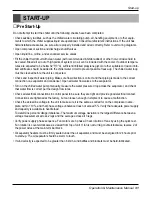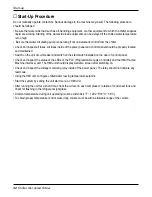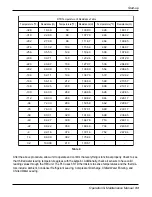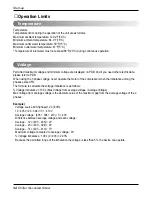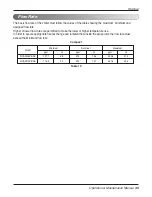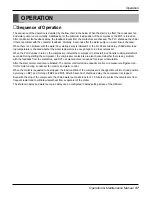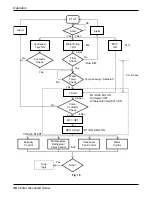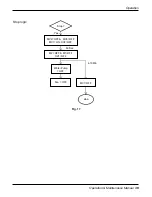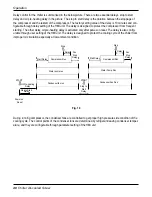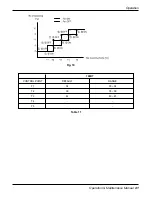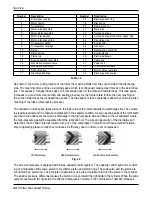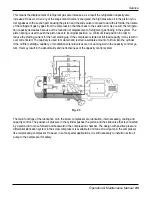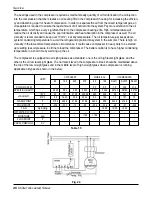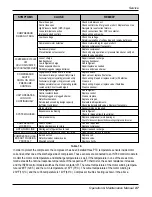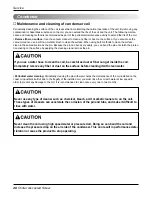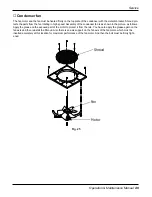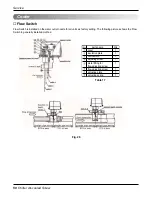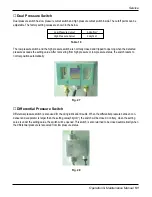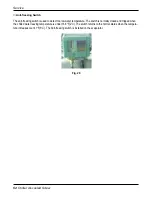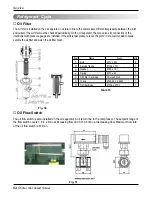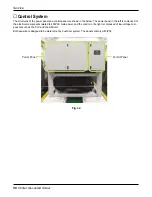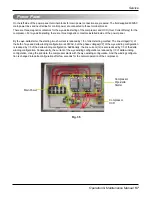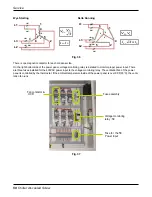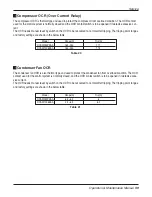
Service
44 Chiller Air-cooled Screw
As shown in the below, during rotation of the rotors the meshing shifts from the suction side to the discharge
side. The meshing rotors enclose a working space, which is continuously reduced as it moves in the axial direc-
tion. This causes a V-shaped lobe space to form between each of the male and female lobes. This lobe space
increases to a maximum size (suction and sealing process). As the rotors rotate further, the new meshing on
the suction side closes the V-shaped lobe space. The lobe space is then constantly reduced by continuing inter-
meshing of the lobes (compression process).
The reduction in lobe space takes place on the lower side of the rotors towards the discharge side. The volume
is steadily reduced and it is thereby compressed in the sealed condition. As soon as the peaks of the rotor teeth
are free to the outlet port, the vapor is discharge to the high-pressure side and flows to the oil separator where
the high-pressure gas will be separated from the lubrication oil. The size and geometry of the discharge port
determine the so called “internal volume ratio (Vi)” of the compressor. This ratio must have a defined relation-
ship to operating pressure ratio to avoid losses in efficiency due to under or over compression.
The screw compressor is equipped with 4-step capacity control system. The capacity control system is consist-
ing of a modulation slide valve, piston rod, cylinder, piston and piston rings. The slide valve and the piston are
connected by a piston rod. The principle of operation is using the oil pressure to drive the piston in the cylinder.
The positive pressure differential causes the piston to move toward the right side in the cylinder. When the slide
valve moves toward the right side, the effective compression volume in the compression chamber increases.
Number
Description
Number
Description
1
Compressor casing
18
Discharge fixed ring
2
Motor casing
19
Disc spring
3
Oil separator
20
Bearing lock nut
4
Motor rotor assembly
21
Male rotor
5
Motor stator assembly
22
Suction bearings
6
Motor rotor washer
23
Suction bearings inner/outer spacer ring
7
Motor rotor spacer ring
24
Oil guiding ring
8
Oil separator baffle
25
Suction filter
9
Oil separator cartridge
26
Oil heater
10
Piston
27
Refrigeration Lubricant
11
Piston spring
28
Suction flange
12
Piston rod
29
Discharge flange
13
Bearing seatÅfs cover plate
30
Cable box
14
Modulation solenoid valve
31
Power bolt
15
Modulation slide valve
32
Thermostat terminals
16
Slide valve key
33
Motor cable cover plate
17
Discharge bearings
34
Discharge check valve
Table 14
Fig. 22


